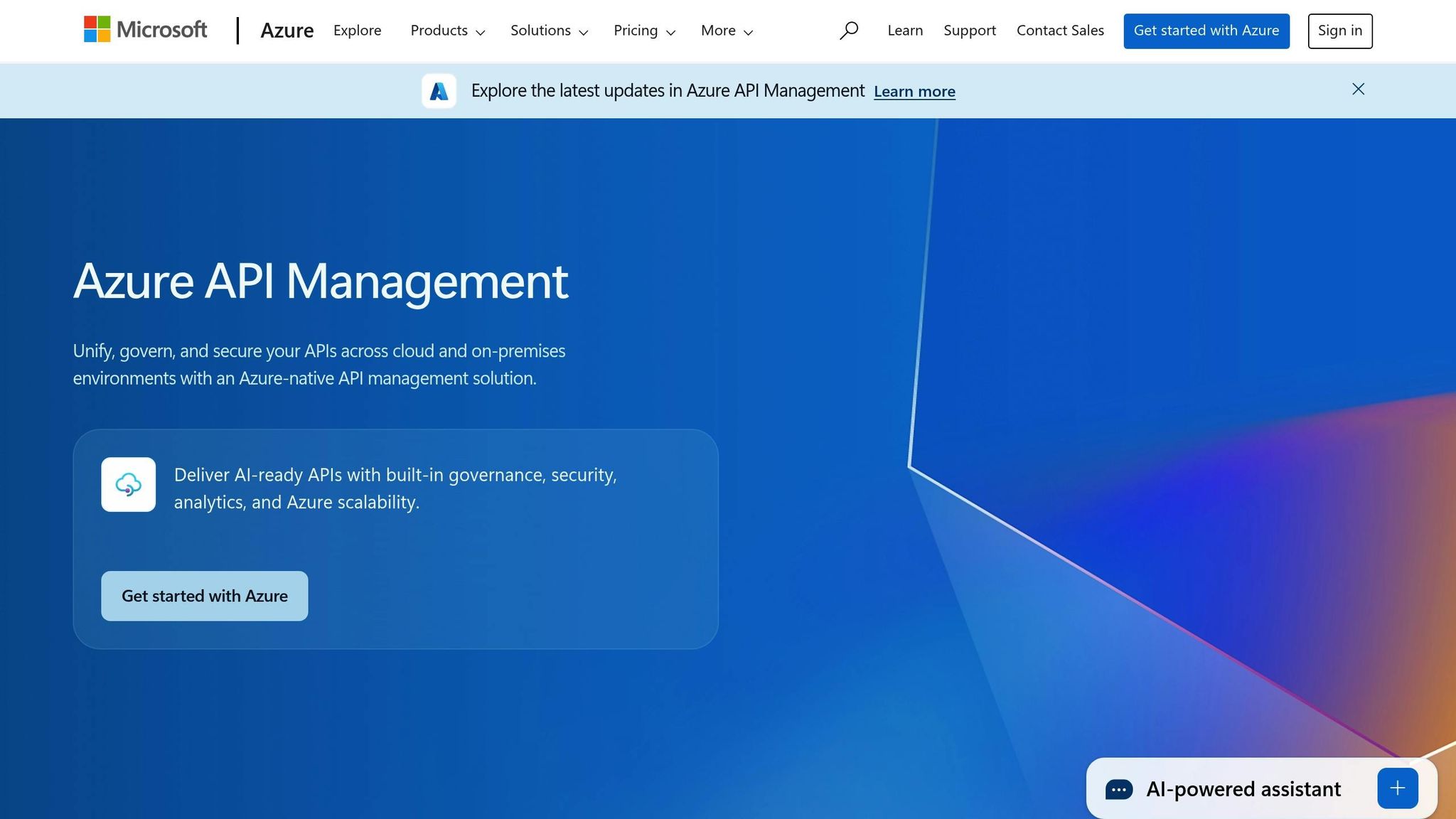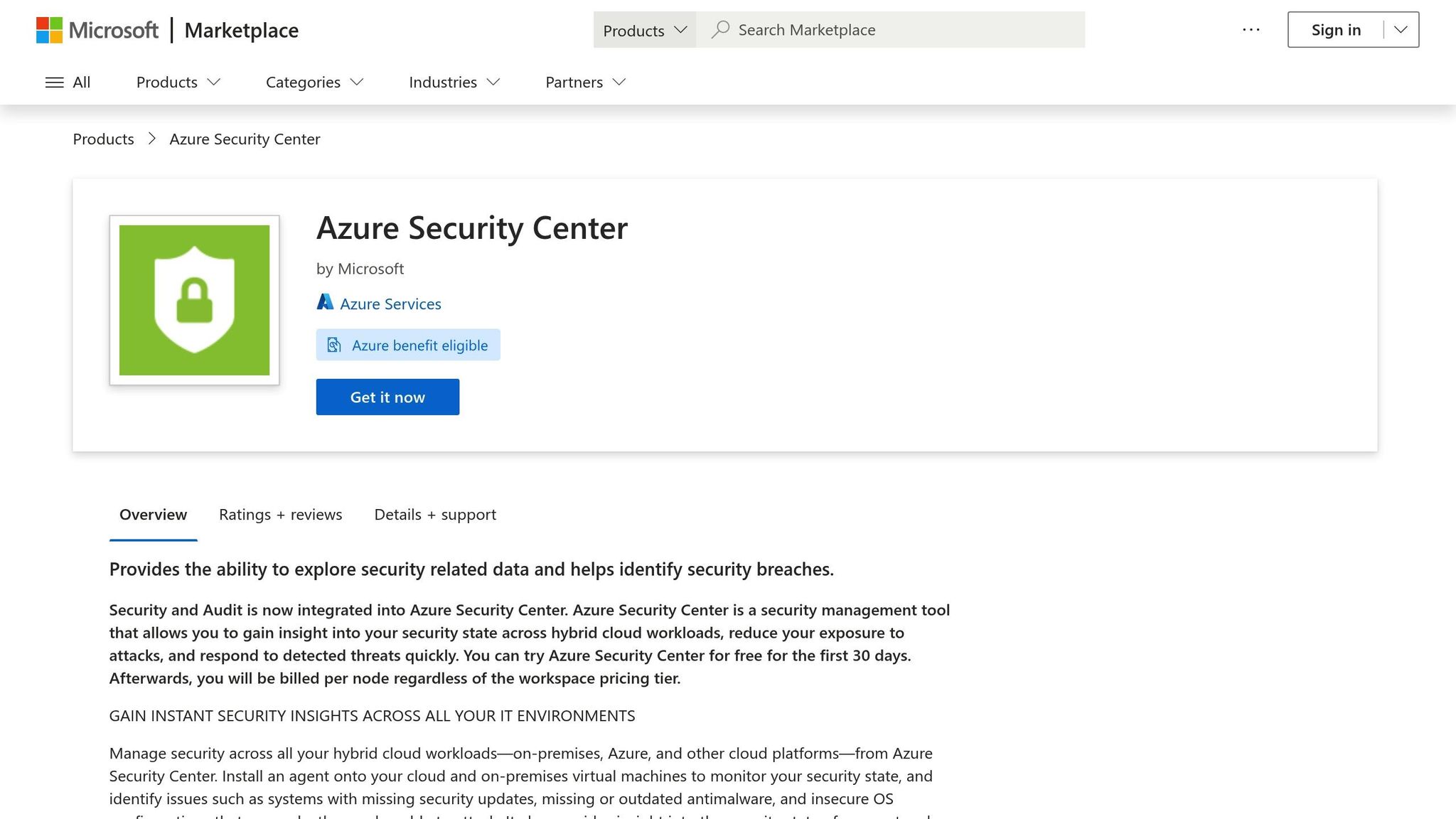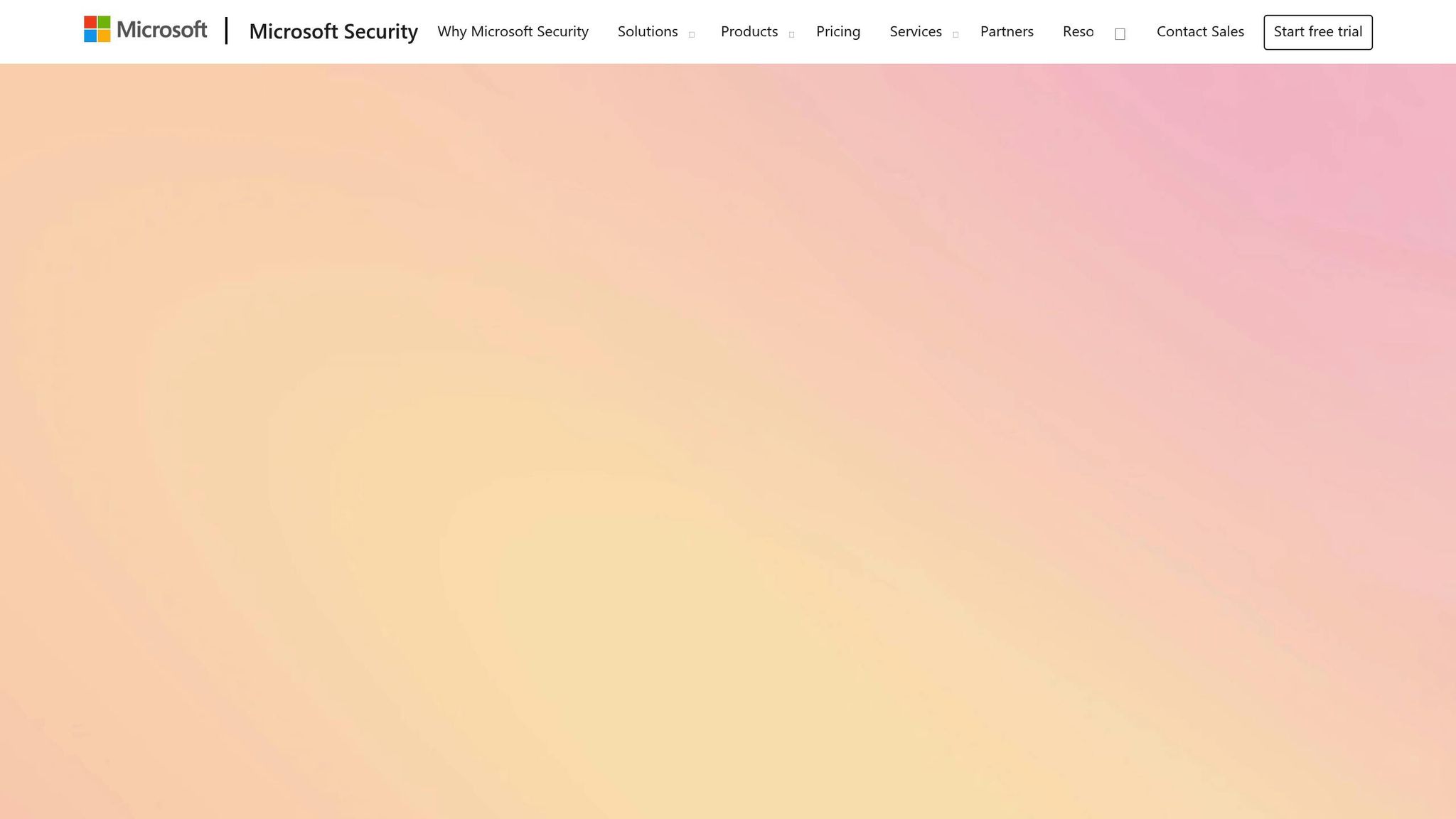How to Build HIPAA Compliant Healthcare Apps
Building a HIPAA-compliant healthcare app means adhering to strict regulations for managing Protected Health Information (PHI). The process involves implementing safeguards, using secure tools, and following legal requirements to protect patient data. Here's the gist:
- Understand HIPAA: It mandates administrative, physical, and technical protections for PHI, including encryption, access controls, and breach notifications.
- Use the Right Tools: Platforms like Microsoft Azure offer HIPAA-ready services such as Azure Security Center, Azure Active Directory, and Azure Key Vault. These tools help secure data, monitor threats, and manage access.
- Follow the Shared Responsibility Model: Microsoft secures the infrastructure, while you're responsible for securing apps, data, and processes.
- Design Secure Architecture: Use multi-tier structures, zero-trust models, and role-based access controls to keep data secure.
- Integrate Compliance into Development: Build CI/CD pipelines with security checks and ensure all workflows meet HIPAA standards.
This article explores how to use Microsoft’s ecosystem to meet HIPAA requirements while building secure, efficient healthcare applications.
5 Key Aspects of HIPAA-Compliant App Development - Best Practices
HIPAA Compliance Requirements in the Microsoft Ecosystem
Creating HIPAA-compliant healthcare apps involves aligning regulatory standards with the tools and services in Microsoft's cloud ecosystem. This section explains the safeguards and shared responsibilities that connect HIPAA standards with Microsoft's offerings.
Core HIPAA Requirements for Healthcare Apps
HIPAA compliance revolves around three main safeguards: administrative, physical, and technical protections for PHI (Protected Health Information). Each of these plays a critical role in shaping how your app is designed and managed.
- Administrative safeguards focus on policies and procedures. Organizations must designate a HIPAA security officer, conduct regular risk assessments, and document security protocols. Employee training is essential to ensure proper handling of PHI, and clear processes must be in place for granting and revoking system access.
- Physical safeguards protect the hardware and physical locations where PHI is stored or processed. This includes controlling access to servers, workstations, and storage devices. When using Azure, Microsoft handles physical security for its data centers, but securing on-premises equipment and properly disposing of devices with PHI remains your responsibility.
- Technical safeguards require robust technology controls. Encrypt all PHI, both at rest and in transit. Implement access controls to limit PHI visibility to authorized users, maintain detailed audit logs for all PHI activity, and use unique identifiers for user authentication.
The minimum necessary rule dictates that PHI access should be limited to what’s required for specific job functions. For instance, a billing clerk should not have access to clinical notes, and a nurse should only view financial information if their role demands it.
HIPAA also includes breach notification requirements. Any unauthorized disclosure of PHI must be reported to affected individuals and the Department of Health and Human Services (HHS) within 60 days. Breaches impacting 500 or more individuals must also be disclosed to the media.
Shared Responsibility Model
Microsoft secures the infrastructure, while organizations are responsible for securing apps and data. Understanding this division is crucial when using Azure to manage PHI securely.
- Your responsibilities include configuring Azure services correctly, managing user access, encrypting sensitive data, and maintaining audit logs. Your application code must handle PHI securely, and your business processes need to align with HIPAA standards.
- Data classification and handling fall entirely on your organization. Microsoft’s systems don’t automatically identify or protect PHI. You’ll need to label data correctly, set up access controls, and ensure PHI flows through your app in compliance with HIPAA.
- Incident response requires teamwork. Microsoft will notify you of infrastructure-level security events, but you’re responsible for identifying and responding to breaches or unauthorized access in your application.
- Backup and disaster recovery planning must also meet HIPAA requirements. While Microsoft provides infrastructure for backups, you’re responsible for configuring these services to protect PHI during backup and recovery processes, ensuring that restored data remains secure.
Microsoft's HIPAA Compliance Program
To support compliance, Microsoft offers tools and agreements tailored for healthcare applications. Microsoft provides Business Associate Agreements (BAAs) for Azure and Office 365 services that can handle PHI. However, not all services are eligible, so careful selection is critical.
- Azure services covered by BAAs include Azure Virtual Machines, Azure SQL Database, Azure Storage, Azure Active Directory, Azure Key Vault, and Azure Monitor. These services have been assessed for security and include features designed to meet HIPAA requirements.
- Office 365 services such as Exchange Online, SharePoint Online, OneDrive for Business, and Microsoft Teams are also HIPAA-eligible. However, these tools require specific configuration settings to maintain compliance, and some features may need to be disabled.
- Non-covered services include many AI and machine learning tools, certain analytics services, and any preview or beta features. Using these services with PHI would violate HIPAA requirements and compromise compliance.
Microsoft’s compliance certifications, including SOC 1, SOC 2, ISO 27001, and FedRAMP, reflect its adherence to security standards that align with HIPAA. However, these certifications don’t replace the need for proper configuration and management on your end.
For regional data residency, Azure offers data centers across the U.S., allowing you to store PHI within specific geographic boundaries. This helps maintain data sovereignty while supporting performance needs for healthcare apps.
Using Azure Services for HIPAA Compliance
Azure offers a range of services designed to enhance the security of healthcare applications built on its platform. Below, we explore key tools that address secure data handling, continuous monitoring, and identity management - critical components for maintaining HIPAA compliance.
Azure API Management for Secure Data Handling

Azure API Management plays a pivotal role in safeguarding sensitive data by securing API endpoints and ensuring that only authorized users can access protected health information (PHI). With robust access control measures and detailed activity monitoring, this service helps healthcare applications maintain a secure and compliant infrastructure.
But securing APIs is just the beginning - effective monitoring is equally critical for meeting compliance standards.
Azure Security Center for Monitoring and Protection

Azure Security Center provides a centralized solution for continuous monitoring and threat detection, helping organizations identify and address potential security risks in their HIPAA-compliant applications. It issues real-time alerts for anomalies, such as unusual access attempts or repeated login failures, ensuring swift responses to potential threats.
The platform also includes regulatory compliance dashboards that highlight areas requiring attention to stay aligned with HIPAA requirements. Advanced threat protection leverages machine learning and threat intelligence to detect suspicious activities, while built-in vulnerability assessment tools pinpoint security weaknesses across your environment. These capabilities are indispensable for maintaining a robust security posture.
While monitoring and threat detection are crucial, managing identity and access is just as vital.
Azure Active Directory for Identity and Access Management

Azure Active Directory (Azure AD) addresses HIPAA's technical safeguards by implementing stringent identity and access controls. Multi-factor authentication significantly reduces risks, securing 99.2% of accounts even in cases of password breaches. Features like Role-Based Access Control (RBAC), Conditional Access, and Privileged Identity Management limit and monitor access to PHI, ensuring only authorized personnel can interact with sensitive data.
Azure AD also includes tools to detect risky sign-in behaviors and provides comprehensive audit logs, which are essential for compliance reporting. Additionally, session management features - such as automatic logouts and token revocation when suspicious activity is detected - add another layer of protection for sensitive information.
Together, these services create a secure and compliant environment for handling healthcare data on Azure.
Building HIPAA-Compliant Architecture
Creating a secure foundation for healthcare apps requires combining well-structured architecture patterns with Azure's security features to safeguard Protected Health Information (PHI).
Architecture Patterns for HIPAA Compliance
A multi-tier architecture is a great starting point. By separating presentation, business logic, and data storage, you can apply targeted security controls and monitor each layer more effectively.
Another critical approach is adopting a zero-trust model, where every access request is continuously verified, regardless of its origin. Azure supports this with conditional access policies that assess factors like device compliance, user behavior, and location before granting access to PHI.
Data segregation plays a key role in keeping health information isolated. For instance, you can create separate Azure subscriptions for different patient groups or departments. This might mean keeping mental health records in one environment and general medical records in another, each with distinct access controls and monitoring.
Using a microservices architecture allows you to break your app into smaller, independent services that communicate securely. This setup ensures that critical services managing PHI have stricter access controls and monitoring compared to less sensitive components.
Now, let’s explore how data residency and privacy controls further protect PHI.
Data Residency and Privacy Controls
Controlling where data is stored and how it moves is essential for HIPAA compliance. Azure’s data residency controls let you specify the geographic regions where your healthcare data can reside - helpful for meeting state-specific regulations or contractual obligations.
Data encryption is another cornerstone of privacy. Azure ensures encryption at rest and in transit using AES-256 for stored data and TLS 1.2 (or higher) for secure communication. These encryption practices align with HIPAA’s requirements for safeguarding data throughout its lifecycle.
With data classification and labeling, you can identify and secure different types of health information. Azure Information Protection automatically classifies documents and emails containing PHI, applying the right protection policies based on sensitivity.
Don’t forget about backup and disaster recovery. Azure Backup and Azure Site Recovery offer automated, encrypted solutions that maintain the same security standards as your primary environment. Recovery objectives should align with your organization’s needs while preserving data integrity.
Network Isolation and Role-Based Access Control
To strengthen network security, several measures can isolate data and enforce strict access controls.
Private endpoints create secure, direct connections between your virtual network and Azure services, ensuring PHI doesn’t travel over public networks. Azure Private Link extends this protection to third-party apps and partner services.
Virtual network segmentation divides your network into smaller, isolated sections based on function and security needs. For example, clinical applications can run in one segment, while administrative systems operate in another. Network security groups act as virtual firewalls, controlling traffic between these segments and blocking unauthorized movements.
Implementing Role-Based Access Control (RBAC) ensures users only access the data they need. Azure RBAC offers fine-tuned permissions tailored to clinical roles. For instance, nurses might have full access to patient care plans but only read access to billing data, while billing specialists have the opposite permissions.
For administrative accounts, Privileged Identity Management (PIM) adds an extra layer of security. PIM requires admins to activate elevated privileges only when needed and logs all actions for detailed auditing.
Conditional access policies take security a step further by evaluating multiple factors before granting access to healthcare systems. These policies can enforce multi-factor authentication, block access from non-compliant devices, or limit access during unusual hours. This flexibility allows you to maintain security without disrupting clinical workflows.
Finally, tools like Azure Sentinel provide real-time threat detection and cloud-specific SIEM capabilities, helping you spot and address potential risks before they impact patient data.
sbb-itb-79ce429
Adding Compliance to the Development Process
Creating healthcare apps that meet HIPAA standards means weaving compliance measures into every step of development. A CI/CD pipeline designed for HIPAA compliance should include automated security tests for all code changes, infrastructure adjustments, and deployments. It’s also essential to implement strict access controls that limit modifications to authorized personnel. By integrating with Azure Active Directory, you can ensure that only approved individuals have access, adding a robust layer of security to every deployment. This approach not only protects sensitive data but also establishes a smooth, compliance-centered workflow.
Compliance-Focused CI/CD Pipelines
How AppStream Studio Speeds Up HIPAA-Compliant Modernization
With the help of Microsoft's robust HIPAA compliance tools, AppStream Studio streamlines the process of securely modernizing healthcare applications.
Developing apps that meet HIPAA standards requires a blend of regulatory know-how and technical skill. AppStream Studio steps in to assist mid-sized healthcare organizations by offering expert teams and tried-and-tested solutions. This combination enables secure, auditable modernization in just a matter of weeks.
Skilled Engineering Teams at AppStream Studio
AppStream Studio's senior engineering teams specialize in regulated industries like healthcare, combining expertise in product development, data management, and AI. Using agile methodologies, these teams ensure secure and efficient modernization without unnecessary complexity or cost.
Tailored Software Development and Cloud Migration
AppStream Studio focuses on custom software development and Azure cloud migration to help healthcare organizations modernize. They seamlessly integrate legacy systems and handle intricate data workflows, all while minimizing disruptions to daily healthcare operations. This approach ensures that sensitive patient data stays secure as organizations upgrade their digital infrastructure.
AI and Data Integration Built for Healthcare
As healthcare increasingly adopts AI-driven automation and analytics, AppStream Studio provides production-ready solutions such as generative AI, semantic search, and conversational AI. Their data integration strategy incorporates advanced knowledge platforms and Retrieval-Augmented Generation (RAG) systems, all designed to uphold strict privacy and regulatory standards.
Key Takeaways for Building HIPAA-Compliant Apps
Creating HIPAA-compliant healthcare apps means walking a fine line between meeting strict regulations and implementing precise technical solutions. Microsoft Azure offers a solid starting point, and working with experienced professionals can help streamline the process, ensuring both compliance and modernization.
Main Steps to HIPAA Compliance
As discussed earlier, achieving HIPAA compliance hinges on three critical areas: identity management, security monitoring, and solid architecture. Here's how these elements come into play:
- Microsoft Entra ID (previously Azure Active Directory): This tool enforces HIPAA's least-privilege principle with features like multifactor authentication, conditional access, and role-based access control.
- Microsoft Defender for Cloud (formerly Azure Security Center): It provides ongoing monitoring, evaluates security posture, and offers actionable recommendations for threat protection.
- Architecture: A robust setup that includes network isolation, data residency controls, and encryption is essential. Incorporating compliance measures early in development - such as CI/CD pipelines with automated security scans and continuous audits - lays the groundwork for long-term success. Additionally, integrating Entra ID logs with Azure Monitor and Sentinel enhances auditing capabilities.
These foundational elements not only ensure compliance but also speed up the process when guided by expert teams.
Accelerating Compliance with AppStream Studio
AppStream Studio builds on these core principles to deliver effective solutions for healthcare organizations. Mid-sized healthcare providers often face unique hurdles, needing enterprise-level security but lacking the resources or timelines of larger players.
AppStream Studio has a proven track record of driving compliance and innovation. For instance:
- They’ve maintained a 95% client retention rate and earned an average client rating of 4.9 out of 5.
- They developed a fully HIPAA-compliant healthcare data platform for a tech startup that now supports over 50 health systems.
- A Fortune 500 healthcare provider partnered with them to improve patient satisfaction, reduce wait times, and achieve substantial cost savings through modernization efforts.
Beyond compliance, AppStream Studio specializes in custom software development and Azure cloud migration tailored for healthcare needs. They also integrate advanced AI tools - like Generative AI, Document Processing, Semantic Search, and Conversational AI - while adhering to strict healthcare privacy regulations. This comprehensive approach enables organizations to modernize outdated systems without compromising on HIPAA compliance.
FAQs
What are the essential technical safeguards for ensuring HIPAA compliance when building a healthcare app on Microsoft Azure?
To meet HIPAA compliance on Microsoft Azure, it's crucial to put technical safeguards in place to protect sensitive health information. Here are three key measures to focus on:
- Access controls: Limit access strictly to authorized personnel by using role-based permissions to define who can view or modify data.
- Multi-factor authentication (MFA): Strengthen security by requiring users to verify their identity through multiple methods, such as a password and a mobile code.
- Audit controls: Activate detailed logging and monitoring systems to track activity, helping to identify and respond to potential breaches.
Using Azure's built-in tools, like Azure Active Directory and Azure Security Center, you can seamlessly incorporate these safeguards into your application development process, ensuring compliance with HIPAA regulations.
What is the shared responsibility model, and how does it impact building HIPAA-compliant healthcare apps with Azure?
The shared responsibility model explains how security duties are divided between Microsoft and your organization when using Azure services. Microsoft takes care of securing the cloud, which includes infrastructure, physical data centers, and foundational services. Meanwhile, your organization is in charge of securing everything within the cloud, such as applications, data, and user access.
For healthcare apps that need to comply with HIPAA, this means utilizing Azure tools like Azure Active Directory for managing secure identities and Azure Security Center to monitor potential risks. Proper configuration of these tools is critical. Additionally, implementing safeguards such as encryption, access controls, and regular audits is necessary to align with HIPAA standards.
What steps can healthcare organizations take to ensure their CI/CD pipeline complies with HIPAA requirements?
To ensure your CI/CD pipeline meets HIPAA compliance, it's crucial to weave security and privacy measures into every stage of the development process. Here’s how you can do it effectively:
Start with access controls to limit who can access or modify sensitive data. Tools like Azure Active Directory can help manage user permissions and authentication, ensuring only authorized personnel can interact with protected health information (PHI).
Next, prioritize data encryption - both in transit and at rest. Services like Azure Key Vault can securely handle encryption keys, adding an extra layer of protection to sensitive data as it moves through your pipeline.
Regular monitoring is another key step. Use tools such as Azure Security Center to continuously watch for vulnerabilities and address them promptly. This proactive approach helps safeguard your pipeline from potential threats.
Lastly, implement robust logging and auditing practices. Keep detailed records of all changes and access to PHI. These logs should be stored securely and reviewed regularly to ensure compliance with HIPAA standards.
By embedding these practices into your CI/CD pipeline, you can uphold HIPAA requirements while keeping your development processes smooth and efficient.